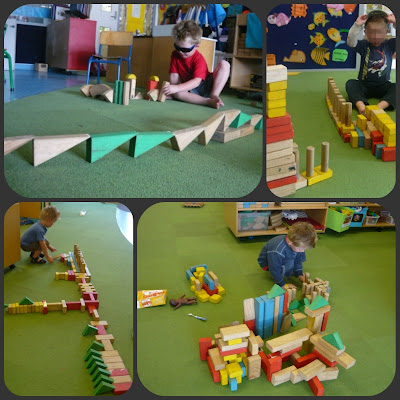This week I have observed R taking an interest in blocks. What started as a small amount of blocks with simple arrangements has now developed into intricate designs, sometimes built in a confined space upwards and sometimes extending in a long line across the room. The Ministry of Education (1995) describes technology as “a creative, purposeful activity aimed at meeting needs and opportunities through the development of products, systems, or environments. Knowledge, skills, and resources are combined to help solve practical problems” (p.6).
Block play is an excellent way in which technological processes are demonstrated and the block itself becomes a technological tool because it is an open ended resource that offers endless possibilities in design, problem solving and logical thinking (Rogers & Russo, 2003). R repeatedly played with blocks over extended periods of time and days which enabled him to gain knowledge about the properties of blocks (what they can and can’t do). As he worked with the blocks, R was also developing skill in balance, manipulation and design and so as the days passed, he was able to combine his newfound knowledge and skills to develop more intricate and elaborate designs.
Block play is an excellent way in which technological processes are demonstrated and the block itself becomes a technological tool because it is an open ended resource that offers endless possibilities in design, problem solving and logical thinking (Rogers & Russo, 2003). R repeatedly played with blocks over extended periods of time and days which enabled him to gain knowledge about the properties of blocks (what they can and can’t do). As he worked with the blocks, R was also developing skill in balance, manipulation and design and so as the days passed, he was able to combine his newfound knowledge and skills to develop more intricate and elaborate designs.
When R plays alone with the blocks, he is deep in thought and concentrates hard on what he is doing and seldom likes to be disturbed. This does not mean he doesn’t like to play with anyone else though! When he chooses to work with his peers, he is much more co-operative and works together with his friends to make wonderful creations.
As R and his friends work together, the technological processes occurring encourages “risk taking, lateral and divergent thinking, the development of multiple solutions to problems, trial and error, teamwork, and the management of resources effectively and efficiently” (Ministry of Education, 1995, p.8)














